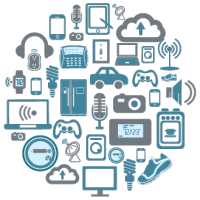3 Steps to Nurture IoT Development and Testing

The Internet of Things is a trend that many businesses have seen as "edging over the horizon," but the truth is that IoT is already here. More devices are being imbued with the ability to connect to the Internet and engage in machine-to-machine communication. This no longer only includes smartphones and wearables; it's extending to ordinary objects like fridges, cars, and toasters. With many new opportunities available, QA management must cultivate an understanding of the IoT and how to create software for these connected items. Here are three steps to nurture IoT development and testing.
1. Have the user in mind.
In regards to IoT testing, user experience is top priority. After all, if a driver tries to use GPS capabilities while on the road and software has defects, the app will likely be abandoned. Organizations not only have to gain a good understanding of what their object is capable of and what apps would pair well with it, but also how users will actually leverage the item. In an interview with StickyMinds, Zephyr CTO Shailesh Mangal noted that test subjects will be essential to the quality and functionality of an IoT app. Requirements will be different depending on if a person is testing a health device or a pet is trialing a bio-chip. By keeping the user at the forefront, developers and testers will have guidance to complete tasks and aim the app directly at the audience.
2. Prepare for challenges.
Although determining a user is beneficial, there are a number of other difficulties that teams are likely to run into when creating IoT software. For this reason, it's critical to prepare for and understand these challenges now. ReadWrite contributor Alex Brisbourne noted that connectivity, Internet infrastructure, and privacy are still main concerns when nurturing IoT testing environments. Each object has its own protocols, making communication a tricky goal to reach, especially in areas where the Internet infrastructure isn't up to par. The differing standards also make it much harder for quality assurance teams to guarantee security and protect sensitive information on IoT devices.
3. Combine new and old testing concepts.
For IoT, teams cannot solely rely on new testing methods. They must also use their traditional practices to cover all of their bases. This means implementing things like risk-based, exploratory, and unit testing. Although these have all been used for years, they will still be valuable in an IoT project. In addition to this, organizations may find it beneficial to use test management tools to handle the variety of scripts and track progress across projects. LogiGear Magazine contributor Jon Hagar noted that these solutions can help teams test better and increase the likelihood of identifying errors early. This functionality, along with other tools such as automation, will be significant assets in producing quality apps and supporting software throughout its lifecycle.
IoT development and testing is a considerable challenge that is still being tackled. As more standards fall into place, teams can use these steps to nurture an IoT development and testing environment.

